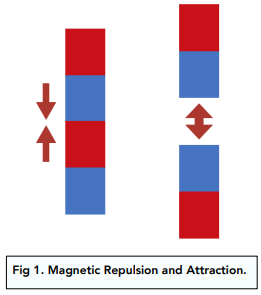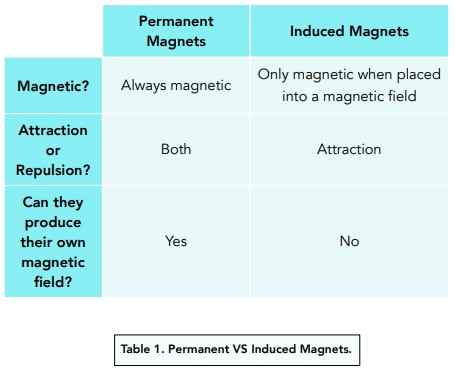Poles of a Magnet (GCSE Physics)
Poles of a Magnet
Magnetic Forces
- Magnets create magnetic forces. Magnets are capable of creating and exerting forces. These magnetic forces are produced due to a magnetic field.
- Magnetic forces are strongest at the poles of a magnet. Each magnet has two poles, a north pole and a south pole. These poles are the places where the magnetic forces are the strongest.
Exertion of Forces
- Poles of a magnet exert forces. We have just seen that the poles of a magnet will exert a force. When we place the poles of two separate magnets next to each other, one of two things can happen.
- Like poles will repel. If we place two north poles next to each other, then the magnets will experience forces of repulsion. This means that the magnets will not touch, and will instead move apart. The same thing will occur if we place two south poles next to each other. This can be explained more simply with the phrase ‘like poles repel‘.
- Unlike poles will attract. If we place a north pole next to a south pole, then the magnets will experience forces of attraction. This means that the magnets will touch, and will ‘join’ together. This can be explained more simply with the phrase ‘unlike poles attract‘.

Attraction and Repulsion
Attraction and repulsion between two magnetic poles are examples of non-contact force.
- Magnetic forces are non-contact forces. Since magnetic forces do not require two objects to be touching, they are described as noncontact forces. Previously, we saw non-contact forces when we looked at electrical charge.
- Attraction and repulsion occur with permanent magnets. The attraction and repulsion experienced by magnets are examples of non-contact forces. These often occur with permanent magnets such as steel magnets.
Producing Magnetic Fields
Inducing Magnetism
- Magnets can produce magnetic fields. When we have a magnet, it will produce a magnetic field. Permanent magnets will produce their own magnetic field, as opposed to induced magnets which do not.
- There are two types of magnets. We can have two kinds of magnets, permanent magnets or induced magnets. We described permanent magnets above, for example alloys of iron, nickel and cobalt. Induced magnets are slightly different; they only ‘become’ magnets when they are placed into a magnetic field. For example, alloys with less iron, nickel and cobalt.
- Magnets can be magnetically soft or hard. A substance which is permanently magnetised can be called a hard magnet, whereas a substance which is temporarily magnetised can be called a soft magnet.
- Induced magnets will cause attraction. If we have an induced magnet, this will exert a force, namely the force of attraction. This means that induced magnets will attract other magnetic materials which are close by. This can be seen with iron fillings which can become induced magnets.
- Induced magnets lose magnetism. When we remove an induced magnet from a magnetic field, then it will lose most of its magnetism. In some cases, the magnet will lose all of its magnetism very quickly.
Permanent VS Induced Magnets

Magnetisation and Demagnetisation
We can magnetise a magnetic material or demagnetise a magnet.
Methods of Magnetisation
- Stroking the material with a magnet. As a magnet strokes a magnetic material, the magnetic dipoles in the magnetic material will align in one direction. This will produce a magnetic field, as described earlier when talking about induced magnets.
- Using a direct current. If a large direct current is passed through a solenoid, a strong magnetic field will be produced. This can magnetise the steel bar inside.
Methods of Demagnetisation
- Heating the magnet. Thermal heat energy causes molecules to gain kinetic energy and move around more. In a magnetised metal, this will cause the molecules to lose their arrangement and leave the metal with either little or no magnetisation.
- Using an alternating current. An alternating current produces a magnetic field which causes the magnetic molecules of the magnet to fall in different directions. If the alternating current is changed or reduced, these molecules will not all return to their original positions and therefore the force of the magnet will be reduced.
- Hammering or dropping the magnet. Applying a strong force to a magnet, such as hammering it or dropping it on the floor, will cause the molecules within the magnet to become randomised. They will los heir arrangement and become demagnetised.





Still got a question? Leave a comment
Leave a comment